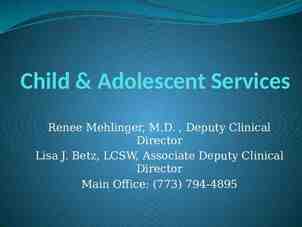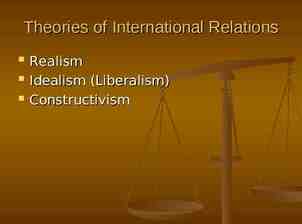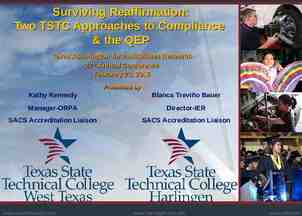Family and Culture: Functions of the Family
19 Slides519.00 KB

Family and Culture: Functions of the Family

Objectives Having viewed this slide show you should be aware of: The ‘loss of functions’ thesis. The functions of the family. That in late modernity or postmodern society the family is taking on new functions. There is a growth in people seeking alternatives to the family or choosing alternative styles of family life. Family and Culture Week 3 2

Introduction Ronald RonaldFletcher Fletcher (1966) (1966) talked talkedof ofthe the 'multifunctional 'multifunctionalfamily', family', but buthe hewas wasequally equally aware awareof ofthe thefamily family being beingstripped strippedof ofits its secondary secondaryfunctions. functions. The Themodern modernnuclear nuclear family, family,he hefelt, felt, was wasleft leftwith with‘residual’ ‘residual’ functions. functions. Family and Culture Week 3 3

George Murdock’s Universal Residual Functions George GeorgeMurdock Murdock (1949) (1949) conducted conductedaasurvey survey of of 250 250 societies societiesand andclaimed claimedthere thereare arefour four universal universalresidual residualfunctions functions of ofthe the family: family: sexual sexual (by education he really meant socialisation) education education Family and Culture Week 3 economic economic reproductive reproductive 4

Talcott Parsons: Family Stripped of its Functions Talcott Talcott Parsons Parsons sees seesthe themodern modernfamily family as as“stripped” “stripped” to tojust justtwo two‘basic ‘basicand and irreducible’ irreducible’functions: functions: Socialisation Socialisation of ofchildren children Family and Culture Week 3 Stabilisation Stabilisation of of adult adult personalities personalities 5

Critique of Functionalist View Both BothMurdock Murdockand and Parsons Parsonsreflect reflect the the functionalist functionalist perspective perspective on onfamily familyfunctions functions The Thefamily familyfunctions functionsin inan an over-romantic over-romanticand and idealised idealisedway. way. This Thisreferred referredto toas asthe the ‘warm ‘warmbath baththeory’ theory’of of family. family. Family and Culture Week 3 6

Family Adaptation in Postmodern Society In InPost-modern Post-modernsociety societythe thefamily familyisis modifying modifyingitself itselfto tomeet meetthe thechanged changed circumstances circumstancesof ofcontemporary contemporarysociety. society. The Thefamily familyhas hasbecome becomemore morechildchildcentred, centred,but butwith withfewer fewerchildren children However, However, many manycouples couples are are choosing choosingto tostay staychildless childless Family and Culture Week 3 7

Source of Emotional Support Families Familiesare areseen seenas asfunctioning functioningto to provide providewarmth warmthand andsecurity, security, emotional emotionalsupport. support. All Allfamily familymembers membersbenefit benefitfrom from the the loving lovingrelationships relationshipsthat that they they share share with witheach eachother. other. Family and Culture Week 3 8

Family as Source of Identity The Thefamily familyprovides providesaasense sense of ofidentity. identity. This Thisisisclearly clearlyimportant importantto to family familymembers membersas as evidenced evidencedby byrecent recent interest interest both bothby byindividuals individuals and andthe themedia mediain infamily family histories. histories. Family and Culture Week 3 9

Family as Leisure Families Familiesalso alsoprovide provideshared shared leisure, leisure,family familyholidays, holidays,special special occasions occasionse.g. e.g. weddings, weddings, birthdays, birthdays,outings, outings,cultural culturaland and educational educationalvisits visits(cinema, (cinema, theatre, theatre,museums, museums, etc.). etc.). Family and Culture Week 3 10

Alternatives to the Traditional Family An Anincreasing increasingnumber numberof ofpeople people are arerejecting rejectingthe thetraditional traditional family: family:singlehood, singlehood,gay gayfamilies, families, childless childless couples. couples. Family and Culture Week 3 11

Singlehood There Therehas hasbeen beenaadramatic dramatic increase increasein inthe the proportion proportionof of oneoneperson personhouseholds householdsin in the thepast past40 40 years. years. 12% 12%of ofpeople people in inGreat GreatBritain Britain now nowlive livealone. alone. Many Manyof ofthese these are areelderly elderly widowed, widowed,but but not notall! all! Family and Culture Week 3 Singlehood Singlehoodisis much muchmore more popular popular in inthe the white whitepopulation population than thanethnic ethnic minorities minorities 12

Singlehood (continued) Single Singlepeople peoplenow nowaccount accountfor for just justunder underaa third third of of households households (29 (29 per percent) cent) in inBritain. Britain. They Theyinclude include professional professionalyoung young men menand andwomen. women. And Anddivorced divorcedpeople people Family and Culture Week 3 13

Factors Behind Singlehood Growth Growthof of 'FITT 'FITT women' women'with with careers careersand and education educationsuccess success Women Womenno nolonger longerneed needto tobe be financially financiallydependent dependent upon uponaaman man Creative Creativesinglehood singlehood reflects reflectsthe thegrowth growth of ofthe theaffluent affluent young. young. Increased Increaseddivorce divorcerate rateand and separations separationsfrom from cohabitation. cohabitation. More Morefashionable fashionable 'singles' 'singles' accommodation accommodationisisavailable. available. Family and Culture Week 3 Delay Delayor or rejection rejectionof of marriage/cohabitation marriage/cohabitation 14

Childless Couples Childless Childless couples couplesreflect reflect the the fact fact that that there thereisisless lesspressure pressureon onpeople people to to have havechildren. children. Couples Couplesmay mayput putlifestyle lifestylechoice choice above abovestarting startingaafamily. family. Some Somecouples couplesmay maybe beput put off offby bythe the cost costof ofbringing bringingup upaachild child(over (over 50,000 50,000 from from birth birth to toage ageof of 18) 18) Family and Culture Week 3 15

Gay and Lesbian Relationships Gay Gayand andlesbian lesbian But Butthis thisnonnoncouples couplesare areoften often traditional traditionalfamily family childless form childless formisisalso also slowly slowly becoming becomingless lessof of aararity rarity In In2002 2002the theGovernment Government announced announced plans plansto tomake makeititeasier easier for forsame-sex same-sex couples couples to toadopt adopt children. children. Medical Medical technology technology(e.g. (e.g.surrogacy) surrogacy) allows allowspeople people to toconceive conceivechildren childrenin in non-traditional non-traditionalways. ways. Family and Culture Week 3 16

Conclusions There is general support for the loss of functions thesis that argues the family has been stripped of many of its functions. George Murdock sees the family performing 4 universal residual functions: sexual, reproductive, economic and education (socialisation). Talcott Parsons sees the family performing two ‘basic and irreducible functions’ socialisation of children, stabilisation of adult personalities. Family and Culture Week 3 17

Conclusions (continued) There has been a growth in people rejecting traditional family. 12% of people in Britain now live on their own (almost a third of households). Couples account for almost a third of households too. In a less homophobic society there has been a growth of gay and lesbian relationships. Family and Culture Week 3 18

End of Presentation Family and Culture Week 3 19






